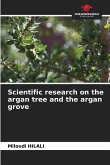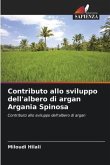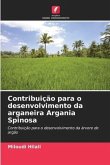In this work we studied the chemical composition of argan oil (Argania spinosa (L.) Skeels, Sapotaceae) according to its extraction method and production origin. We then conducted multi-criteria analysis for the search of adulteration of pure argan oil by other food oils, and finally we studied the phenolic composition of the pulp of the fruit of the argan tree. In the first part of this work we compared the physicochemical characteristics and chemical composition of 21 samples differing by their mode of extraction or coming from different regions of Morocco. The results of this work have contributed to the development of a national standard for argan oil. The second part of this work has developed a simple method and feasible in Morocco by quality control laboratories, for the search for adulteration of argan oil by other virgin oils such as soybean oil, rapeseed, sunflower, olive, apricot, hazelnut, peanut and sesame, based on the composition of fatty acids, triglycerides and sterols. Based on our results, an adulteration.
Bitte wählen Sie Ihr Anliegen aus.
Rechnungen
Retourenschein anfordern
Bestellstatus
Storno








